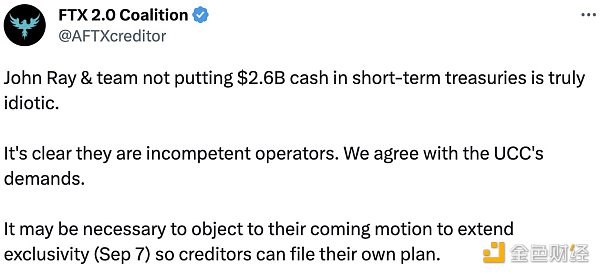If we are optimistic about the blockchain, we should also believe in the future of cryptocurrency.
Originally written by Forbes English-language writer Sarah Olsen, she is the managing director of the leading cryptocurrency exchange and custodian Gemini. The article was compiled by the Bluemountain Labs team and the English copyright belongs to the original author.
I often hear people outside the blockchain industry say, "I don't believe in cryptocurrencies, but I believe in blockchain." With Facebook's recent announcement of Libra's proposal, this sentence has become more common and more common. The more frustrating it is.
At first glance, "it is a blockchain, not a cryptocurrency" seems to be a reasonable point of view, but the fact is that it completely ignores the main points of the blockchain and cryptocurrency. This is because cryptocurrency is nothing more than a unit of value in a blockchain network, and the two are different, but they work together.
For many, this can be an incomprehensible concept – in part because embedding the economic benefits of a technology into the technology itself is a novelty. But once you start to understand how cryptocurrencies work and what makes it possible in this new world, the unique and powerful relationship between blockchain and cryptocurrency becomes clear.
- European Central Bank | Digital Challenges Facing International Monetary and Financial Systems
- Wal-Mart and IBM reach a partnership to track shrimp supply chain with blockchain
- How to discover the next encryption bubble: some thoughts on technology and fundamentals

Blockchain and cryptocurrency
Almost three years ago, when I joined an industry-leading cryptocurrency exchange and acted as a manager, I was very aware that this would help to recognize that blockchain is a special type of computer—a Information can be delivered without the need for centralized agencies to ensure everything goes smoothly. In the case of finance, blockchain computers (or networks) provide a way for people to send and receive funds over the Internet without the need for a bank or credit card company.
In fact, cryptocurrency is a number used to transfer value between users in a blockchain network. Take the example of bitcoin, commonly referred to as digital gold. The “currency” in the network is bitcoin, which represents currency. By building monetary value into the core of the technology, cryptocurrencies transform blockchain computers into digital economies that carry them, creating a way to completely avoid traditional financial systems.
In other words, it is a finance designed for the Internet, a programmable currency that allows anyone to send and receive money as if they were online.
For billions of people around the world who don't have access to bank accounts or get government-issued ID cards, the rise of blockchain and cryptocurrencies means they can now participate in the digital economy. These new computer networks are providing people with unprecedented credit, financial products, and the ability to consume physical and digital products in a borderless, unlicensed manner.

Encrypted currency current application
In general, today's cryptocurrencies are largely divided into four types: irreplaceable pass (NFT), security pass, utility pass (or virtual goods), and stable currency. For example, Bitcoin and Ethereum are often seen as utility passes because they act as commodities or utilities in their networks. Security passes are somewhat similar in function, with the difference that they are often used more as a fundraising tool. As the network matures, certain security passes will evolve into practical certificates over time. The nature of NFT is completely different, and it is best to describe them today as immutable tokenized assets. The stable currency, as its name suggests, is a cryptocurrency that functions like a traditional currency.
The value of cryptocurrencies varies by design. For example, the value of Bitcoin is determined by the Bitcoin network, where each bitcoin is replaceable. The bitcoin that exists in the network will never exceed 21 million, and its circulation is controlled by the algorithm. This is very different from a stable coin design like Libra, whose value is tied to real-world assets such as fiat money or gold.
Stabilizing coins can send any equivalent dollar to anyone, as long as he is connected to the Internet. More importantly, stable currency transactions happen almost instantaneously, with almost no cost, and the cost of refunds is zero. One of the most common use cases for stable coins today is to transfer funds between cryptocurrency exchanges. So many people think this is the main purpose of stabilizing coins, but in fact it is not always the case.

The future of blockchain and cryptocurrency
Looking ahead, with the expansion of the addressable market for cryptocurrencies, I believe it will attract a large number of developers who will conceive new applications, which we can hardly imagine today. Imagine a world where all values can be acquired and validated on a global scale, and everyone can control their own data. The potential value is not just the personal net worth of the blockchain – it also includes identity, health records, college transcripts, insurance policies, land ownership, and more.
Stabilizing coins will undoubtedly play an important role, and I expect this will bring a booming cryptocurrency native app ecosystem. Local cryptocurrencies such as Bitcoin and Ethereum are indispensable in powering these technologies, and cryptocurrencies that maintain stable value are equally important in connecting the physical world to the digital world.
We need to get out of the current cryptocurrency trading bubble to understand the potential of the blockchain to change our daily lives. This includes projects and institutions that are building useful, transformative applications that not only improve efficiency, but also help to flatten the global economy to create a more equitable and connected system. These projects and companies will be built by a group of people who not only know the world today, but also have the imagination to create a better future, while at the same time having a legitimate attitude and discipline within the framework of appropriate laws and regulations.
Encrypted currencies do not reshape the concept of money, but they are significantly improving the way transactions are handled today in the global and digital ages.
We will continue to update Blocking; if you have any questions or suggestions, please contact us!
Was this article helpful?
93 out of 132 found this helpful
Related articles
- Super-US stocks catch gold? It is up 114% a year, and Bitcoin is still the best performing investment in 2019.
- Bitfinex denies “manipulating the market” or will file a lawsuit against the allegations
- Will the Eurozone debt crisis affect Bitcoin?
- Coinbase opens the “spending money” mode, users will get real-time interest when they hold stable currency.
- Bitcoin can really save the world, organizations that accept cryptocurrency donations achieve 100% growth
- Coinbase CEO accuses the United States of making a big fuss about Libra. Netizen: This time I stand in China.
- The first bitcoin futures block trade is released, will Bakkt's fate turn around?






